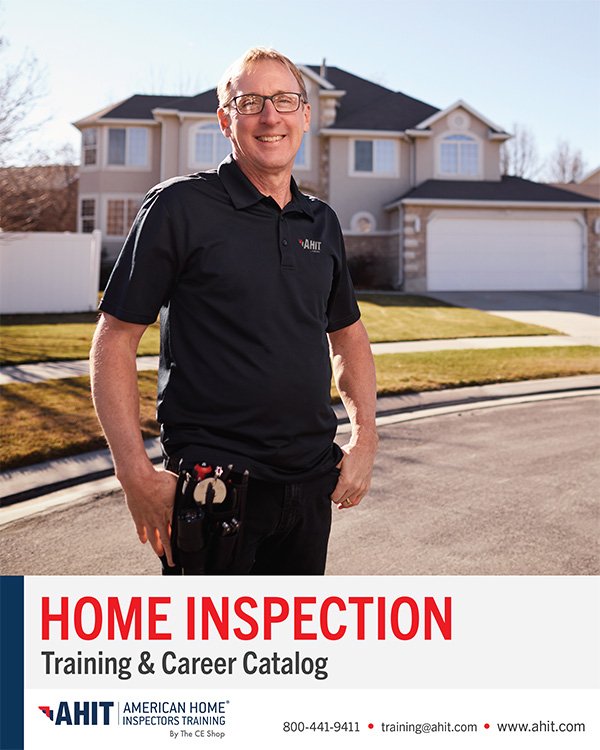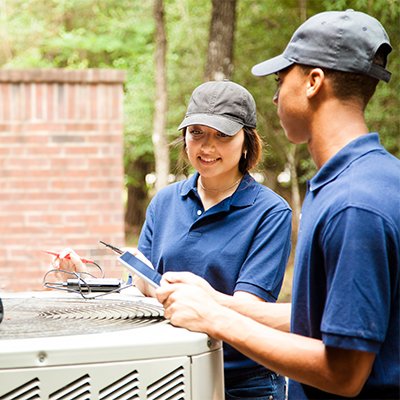How to Become a Home Inspector
800-441-9411
Training@ahit.com
AHIT MAKES IT EASY – START TODAY
When you think about what to do next in your career, it probably doesn’t involve sitting behind a desk. That’s one reason why becoming a home inspector could be the perfect fit. Getting your home inspector license can offer the freedom and flexibility of being your own boss and running your own business how you want it. With far more real estate agents than inspectors, licensed home inspectors are in demand across the country. So many great advantages await you! Learn more about the reasons to become a home inspector.
MAKING THE CHANGE TO HOME INSPECTION
Getting started can feel overwhelming. We get it. That’s why AHIT is here to lend a hand and offer professional guidance every step of the way. Since 1993, we’ve helped over 50,000 people like you become AHIT professional home inspectors with industry-leading online courses and field training courses. With AHIT home inspection courses you’ll learn what to look for during real estate inspections, how to create inspection reports, develop relationships with real estate agents and appraisers, prepare your license application, and get your business started. We take our reputation as being the leader in home inspection training seriously. And we take setting you up for success seriously, too. Learn more about what makes AHIT the best choice for your home inspection training.
GETTING STARTED IS EASY
While the requirements to become a home inspector vary by state, the process is generally the same. Use this step-by-step guide to get your home inspection career started today!
Step 1 — Understand Your State’s Regulations
AHIT can help you start your home inspection career in 48 states. Every state has their own unique licensure requirements, find your current home inspection certification requirements by state. In most states, to become a licensed home inspector you’ll need a high school diploma or GED (but not in all), general liability, and e&o insurance. Some states require you to take a national test or have a certain number of ride along inspections with licensed real estate inspectors.
Step 2 — Choose a School for Your Pre-Licensing Requirements (if required)
Consider the school’s history, number of years in operation, state approvals, and number of alumni to feel confident in your selection. Consider the education providers’ affiliation with organizations like the American Society of Home Inspectors (ASHI) and International Association of Certified Home Inspectors (InterNACHI).
Step 3 — Take Your Pre-Licensing Course
Complete the training required in your state. Even if your state does not require pre-licensing training, you may still want to complete a home inspection training course to feel confident in your skills before entering the field. The AHIT home inspector training program covers everything you’ll need to know for a new career including report writing, working with homeowners to address concerns, Standards of Practice and Code of Ethics. Depending on your business plans you may want to take additional courses like radon inspection, termite inspection, marketing, pools and spas, or other course that can help you offer additional services and make more money.
Step 4 — Take Your State’s Home Inspection Licensing Exam (if required)
Soon after completing your pre-licensing course—while it’s still fresh—schedule your home inspection license exam. Some states require you to take a licensing exam such as the National Home Inspector Exam (NHIE) or other similar state exams. Check your state requirements for more information.
Step 5 — Complete the State Application to Get Your License (if required)
Follow your state’s process for submitting all necessary information on your home inspector application. Depending on your state you may be required to submit proof of e&o insurance (errors and omissions ) or pay an application fee.
Step 6 — CELEBRATE!
Once all steps are complete and your application is approved, you are a licensed home inspection professional! Launch your very own home inspection business or join an established local or national company. Don’t forget to keep track of any continuing education requirements in your state to ensure you maintain your license.
Select Your State to Find Out How to Become a Home Inspector in Your State:
Want to know more? We’re here to help you learn about AHIT’s world-class training and how you can get your home inspector license.
How to Become a Home Inspector
FREE Webinar. Register today.

Request Your Free Catalog & Get Started Today!
Learn more about how to become a home inspector, getting your home inspection certification, how to get home inspector jobs, and the average home inspector salary.

